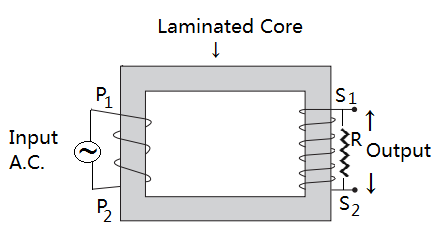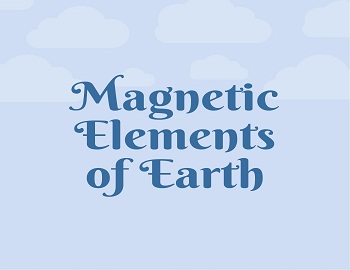Table of Contents
What is Transformer?
A transformer is a device that changes a low ac voltage into a high voltage or vice-versa. The transformer that increases the voltage is known as a step-up transformer and that decreases the voltage is known as a step-down transformer.
Principle- It works on the principle of electromagnetic induction. When the current in one circuit changes, an induced current is set up in the neighbouring circuit.
Construction of Transformer:
A transformer has two coils called the primary (P1P2) and secondary (S1S2) which are insulated from each other, wound on a common soft iron laminated core. The source of alternating EMF is connected to P1P2 and a load resistance R is connected to S1S2.
In a step-up transformer, the primary coil P1P2 consists of a few turns of copper wire whereas the secondary coil S1S2 consists of a large number of turns of copper wire.
In a step-down transformer, the primary coil P1P2 consists of a large number of turns of copper wire whereas secondary coil S1S2 consists of only a few turns of copper wire.

Theory and Working of Transformer:
As the current in the primary coil changes, magnetic flux linked with the primary coil changes and hence due to self-induction induced EMF is produced in the primary coil. In this case, magnetic flux linked with secondary coil also changes and hence due to mutual induction, induced EMF is also produced in the secondary coil.
Let np = Number of turns of P1P2
ns = Number of turns of S1S2
dΦ/dt = Rate of change of magnetic flux linked with P1P2 or S1S2
According to the phenomenon of self-induction,
| EP = -nP dΦ/dt …………….(1) |
According to the phenomenon of mutual induction,
| ES = -nS dΦ/dt …………….(2) |
Divide (2) by (1) then,
| ES/EP = nS/nP = K |
Where K is constant and is called transformation ratio. It is defined as the ratio of the number of turns in the secondary coil to the number of turns in the primary coil.
For step-up transformer,
| ES > EP ⇒ nS > nP |
For step-down transformer,
| ES < EP ⇒ nS < nP |
If IP be the current through the primary coil and IS be the current through the secondary coil, then-
| Input power at any time = EPIP Output power at any time = ESIS |
If there is no loss of power, then-
| Output power = Input power ESIS = EPIP ES/EP = IP/IS = K |
The efficiency (η) of the transformer is defined as the ratio of output power to the input power.
| η = Output Power / Input Power = ESIS/EPIP |
Note: For the ideal transformer, efficiency is 1 or 100%.
Energy Losses in a Transformer:
The power output of a transformer is always less than its power input because of unavoidable energy losses from the transformer. These are categorized as follows-
- Copper Loss- Heat in the copper wire is generated during the working of a transformer. This can be diminished by using thick copper wires.
- Eddy Current Losses- Eddy currents generate heat in the core and hence a part of energy goes waste. In order to reduce eddy currents losses the core is made of laminated sheets of iron insulated from each other.
- Hysteresis Losses- The core of transformer is necessarily ferromagnetic in order to have better transformer action. Flow of alternating currents in the coils cause hysteresis cycles continuing in the metal core and thus good amount of energy is lost in the form of heat radiations. In order to minimize the loss, soft iron are used rather than steel.
- Magnetic Loss- This loss is due to the leakage of magnetic flux. But this loss is very small.
Uses of Transformer:
- A transformer is used to regulate volatge for T.V., refrigerator, computers, A.C. etc.
- In induction furnaces.
- A step-down transformer is used for welding purpose.
- In the transmission of electric power over long distances. At the hydel power station, step-up transformer is used to increase volatge to several thousand volts and hence current (I) is reduced. Due to this, the power loss will be minimum (I2R). Again at the receiving station, with the help of step-down transformer, the volatge is reduced to approximately 220 volts, befor supply to domestic consumers.








Comments (No)